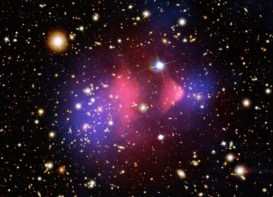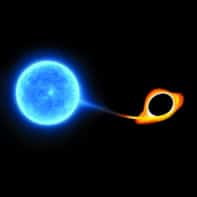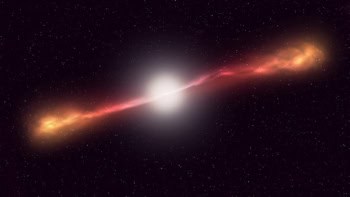If dark matter really does reside only in large clumps, these cannot be any bigger than one-tenth the mass of the Earth. This is the claim of physicists from Germany and the UK, who have studied gravitational lensing data from almost 300 distant supernovae. The findings could require the notions of dark matter -- a mysterious substance thought to constitute the vast majority of matter in the universe -- to be revised by cosmologists, some of whom have assumed that dark matter clumps could have masses many times that of the Sun (Phys. Rev. Lett. 98 071302).
When physicists look up at the sky, they notice that there’s not nearly enough visible matter to hold the universe together assuming our understanding of gravity is correct – in fact, up to 95% appears to be missing. That is why many advocate the idea of dark matter, an elusive substance that could account for the “missing” mass, but that is invisible to modern telescopes because it doesn’t interact strongly with light.
According to the most popular model, dark matter could either be an accumulation of as-yet unseen heavy particles (“WIMPs”, or weakly interacting massive particles), or large clumps of dense ordinary matter that do not emit large amounts of observable radiation (“MCOs”, or massive compact objects) – or even a mixture of both.
Now Benton Metcalf from the Max Planck Institute for Astrophysics in Germany and Joseph Silk from the University of Oxford in the UK have attempted to see just how large these MCOs can be. The physicists analysed the light from supernovae so distant that the light took up to five billion years to get here. If an MCO had strayed through the path of one of these light beams, the light would be measurably dispersed by the MCO’s gravitational field in an effect known as “gravitational lensing”.
Because of the huge time lapse, the chances of a large MCO straying through would have been fairly high. But despite data hoarded from almost 300 supernovae, the physicists could find no dispersion caused by MCOs larger than one-hundredth the mass of the Sun, implying there is an 89% certainty they do not exist at all. Moreover, they claim that MCOs larger than one-tenth the mass of the Earth can be confidently “eliminated” as the sole constituent of dark matter.
This news might come as a shock to some cosmologists who had been considering faint stars, neutron stars and black holes as significant constituents of dark matter. Instead, Metcalf and Silk suggest that dark matter is more likely made of WIMPs.



